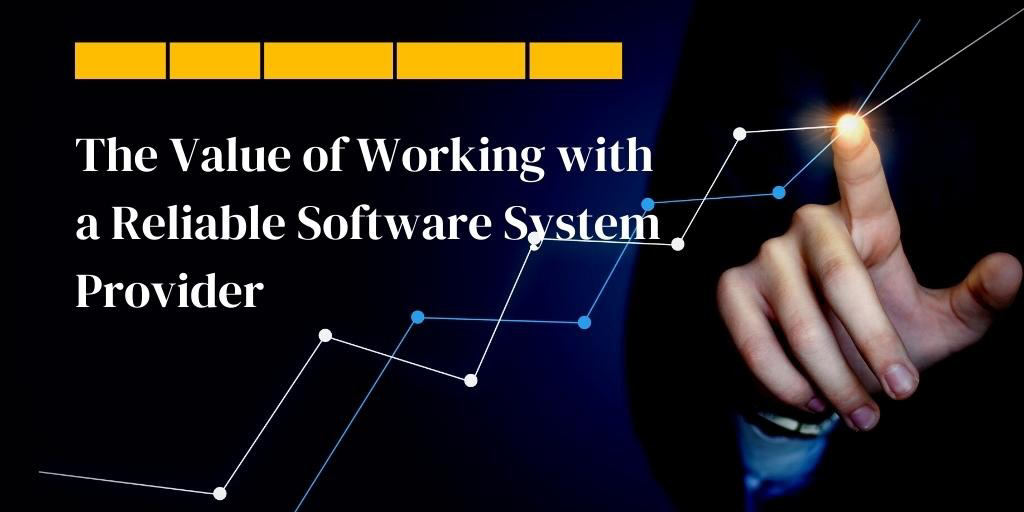Digitally Enhance Asset Management With Software Integration A company’s assets...
Although many people are familiar with the term Software as a Service (SaaS), a few understand its value. Industries have never stopped reaping the benefits of Software since its inception as a tool that facilitates efficient workflow, streamlined procedures, and thorough monitoring of employees and their tasks. Digital optimization has become an absolute necessity to stay up with the ever-developing technology of today and tomorrow
Understanding Software as a Service (SaaS) Works
With SaaS, you can get an entire software suite from a cloud provider. The service provider’s data center is home to all system hardware, middleware, application software, and data. Organizations can lease access to apps, which employees then access through a web browser, pay-per-use, or the whole system itself.
Cloud-based Software is stored remotely and made available to users via the internet, eliminating the need to download and install it locally. Correspondingly, your data will be encrypted, making it extremely difficult for unauthorized parties to access it. Having the right Software can allow you to do whatever you desire.
The provider will provide the infrastructure and Software with a cooperative service agreement, keeping the app and your data safe and secure. Using a SaaS model, your business may have an app up and operating with minimal effort and expense. Workflow is sped up and optimized as a result which also improves employee performance over time.
Discovering The Many Types of SaaS in The Market
There is a wide variety of SaaS programs in any industry today. Types of popular SaaS software that could be useful to your company include equipment collaboration tracking software and more. Additionally, SaaS also excels in providing the following services:
Customer Relationship Management (CRM) Software
Control information about customers, monitor their activities, gather statistics about the company, and automate the selling process.
Enterprise Resource Planning (ERP) Software
ERP software combines separate systems into a unified whole to facilitate communication and collaboration like a tool crib software.
Project Management (PM) Software
Project success requires careful planning, careful management of time and resources, and clear, consistent communication.
Programming for Keeping Accounts (Accounting Software)
Maintaining order in your financial records is essential to ensuring your organization expands successfully.
Email Marketing (EM) Software
Get the most out of your marketing email automation by ensuring your messages reach their intended recipients.
Software as a service (SaaS) applications also encompasses invoicing and billing programs, communication tools, website hosting platforms, and HR administration suites. Thanks to the abundance of SaaS offerings, you may choose which cloud solutions are best for your company. For instance, ISI-Exeter, a top-of-the-line software provider, guarantees quality warehouse management software solutions and comprehensive financial management systems.
Top Perks of Using Software as a Service (SaaS)
Because of its adaptability, the Software has become an indispensable resource for firms across a wide range of industries in search of greater efficiency. So, compared to alternative service models, SaaS solutions have many benefits. In most cases, you should keep the following SaaS advantages in mind while you evaluate potential solutions
1. Capacity to Expand
The flexibility of a software-as-a-service model makes it simple to adapt to your company’s changing requirements. It is simple to purchase additional licenses or features for your Software as your business expands and your bandwidth and user needs change. When you’re on your server, things get complicated. Private software hosting may experience strain from a sudden increase in software users, necessitating server and hardware improvements.
2. Cost-cutting Measure
The use of SaaS eliminates the necessity for various costly and ineffective pieces of hardware. Companies save money on hardware by not having to buy, install, and maintain it with SaaS apps, which you may access over the cloud rather than on-premises. Servers, databases, code, and other app parts are hosted and maintained by the software suppliers in a web-based architecture.
3. Up-to-Date
Providers of SaaS applications often update their framework so that you can stay caught up. Whenever issues or new features are introduced, it is simple to manage updates and patches with web-based Software. As a result, you won’t have to spend as much money each year keeping your staff on the cutting edge by upgrading their Software.
4. The Ability to Adapt Easily
With its seamless optimization of the following areas, SaaS outperforms any conventional management or tracking tool in terms of adaptability, which alleviates the following areas:
- Budgeting. SaaS subscriptions often operate on a pay-as-you-go basis, with a recurring monthly or annual price, as opposed to the one-time expense of purchasing Software and licenses. Consequently, organizations may more accurately control costs and plan for the future.
- Reduce the hassle of mobilizing your staff. By allowing users to access their data and applications from any Internet-connected computer or mobile device, SaaS makes it simple to “mobilize” your workforce. The service provider has already made the necessary adaptations so that your apps will function properly across a wide range of platforms and hardware. As a bonus, you won’t need to hire a security specialist to deal with mobile computing’s inherent risks. If you choose your service provider wisely, your information will be safe no matter what kind of device is used to access it.
- Get your app info from any device. The cloud allows users to view their data from any device with an Internet connection. App data stored in the cloud is also safe from being lost if the user’s computer or device crashes.
- Access. Furthermore, the mobility and portability offered by SaaS make it a more versatile option than conventional software installs. Users are no longer confined to a single desktop computer in a cubicle; instead, they can access their work from anywhere with an internet connection. In its place, remote work allows staff members the flexibility to do their jobs from any location, perfect to be a tool tracking system. With the help of offline functionality built into some SaaS solutions, users can install and run these apps even when they are not connected to the internet.
5. Scale of Operations
For the most part, SaaS is best suited for smaller and medium-sized enterprises, especially those with basic operations. While some SaaS offerings may be able to manage the sophisticated needs of enterprise-level enterprises out of the box, this is only sometimes the case. Choosing the right SaaS programs for your company requires consulting a cloud professional.
The Bottom Line
SaaS can aid your company in several ways, including increasing productivity, effectiveness, and cross-locational cooperation. Many companies have converted to SaaS because it helps them save money, allows their employees to access company software from any location, and can be scaled when their workforce grows or shrinks. As a result, tracking and monitoring everything in one place is easier and more convenient. SaaS gives you access to information in an application that anyone with access can utilize, thus, making communication run smoother and paving your way toward a better path.
Recent Blogs
Why It Pays To Invest In An Asset Tracking Software
Why It Pays To Invest In An Asset Tracking Software...
How Does Equipment Tracking Software Help With Construction?
How Does Equipment Tracking Software Help With Construction? In construction...


